17 Signs Your Dog Is Under Stress And What To Do

Dogs can’t tell us when they’re feeling anxious or overwhelmed, but they show us through their behavior. Recognizing these stress signals early helps prevent more serious problems from developing.
Your furry friend depends on you to understand when something’s wrong and to help them feel safe again.
1. Excessive Barking Or Whining

That non-stop barking isn’t your dog being naughty. When dogs feel anxious, they often vocalize their distress through persistent barking or whining.
Try to identify what’s triggering this behavior. Is it thunderstorms? Strangers? Once you know, you can help by playing soft music or using a calming collar with soothing pheromones.
2. Panting Or Drooling
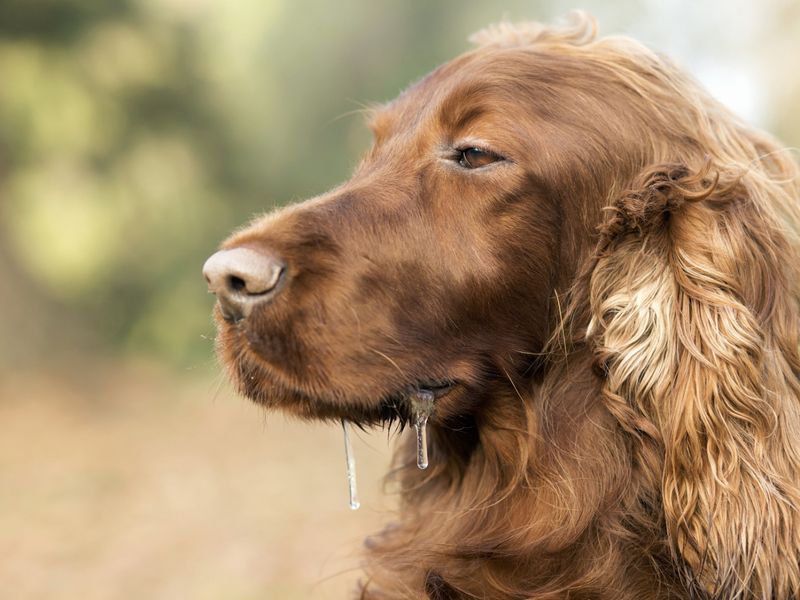
Heavy breathing and pools of drool aren’t always about heat or hunger. Stress can trigger these physical responses even when your pup is in a cool environment.
Move your dog to a quieter, cooler spot if you notice excessive panting or drooling. Fresh water helps too. Remember that some breeds naturally drool more, so look for changes from their normal behavior.
3. Shaking Or Trembling

When your furry friend trembles like a leaf, they’re telling you something’s wrong. This involuntary reaction happens when their nervous system kicks into high gear from fear or anxiety.
Create a calm sanctuary away from whatever’s causing stress. Gentle pets along their back or wrapping them in their favorite blanket can provide comfort and security during these shaky moments.
4. Loss Of Appetite
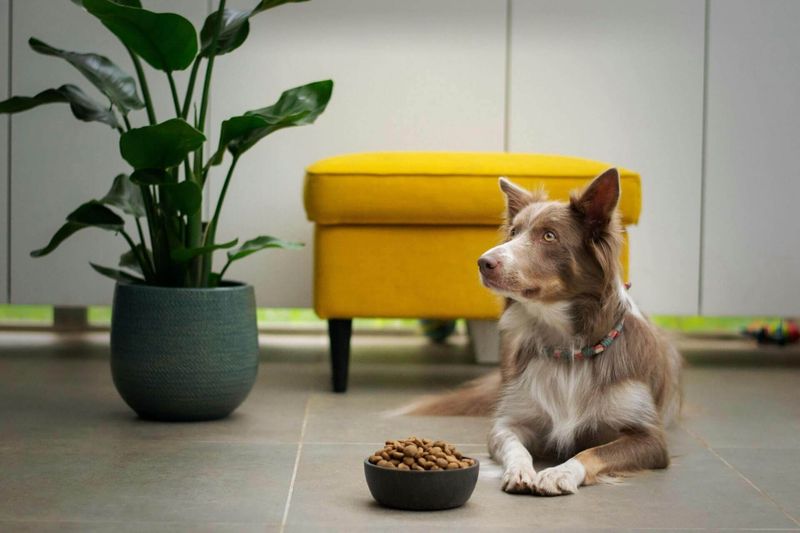
A suddenly picky eater might be dealing with more than just food preferences. Stress commonly affects appetite, making even favorite treats seem unappetizing to your worried pup.
Try offering different food options or hand-feeding. If meal rejection continues beyond a day, it’s time for a vet visit. Sometimes warming food slightly can make it more enticing during stressful periods.
5. Hiding Or Avoiding Interaction

Finding your normally social pup tucked behind furniture? This retreat signals they’re feeling unsafe or overwhelmed.
Don’t force interaction when they’re in hiding mode. Instead, ensure they have access to a quiet, comfortable space where they can decompress. Check on them gently, offering reassurance without pressure to come out until they’re ready.
6. Destructive Behavior (Chewing, Digging)
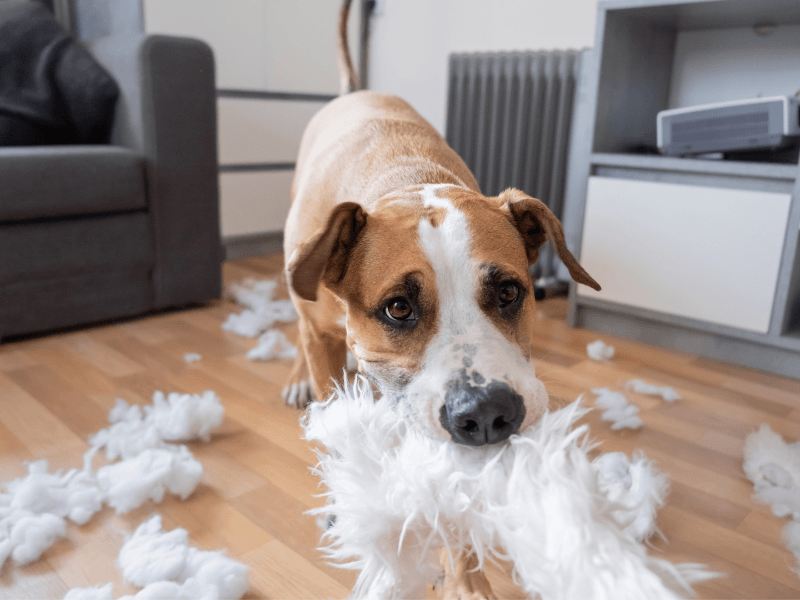
Coming home to destroyed cushions isn’t your dog being spiteful. Anxious pups often channel their stress into destructive outlets like chewing furniture or digging holes.
Redirect this energy with appropriate chew toys and puzzle feeders. Daily exercise helps burn nervous energy too. For severe cases, creating a safe zone with their favorite toys can minimize household damage while they learn healthier coping skills.
7. Excessive Licking Or Grooming

Constant paw-licking or fur-chewing goes beyond normal grooming. These repetitive behaviors serve as self-soothing mechanisms when dogs feel anxious or bored.
Break the cycle with engaging activities like training sessions or interactive toys. Physical exercise works wonders too. Watch for raw spots developing from over-grooming – these may require veterinary attention and possibly protective gear like soft cones.
8. Changes In Body Language (Cowering, Tucking Tail)
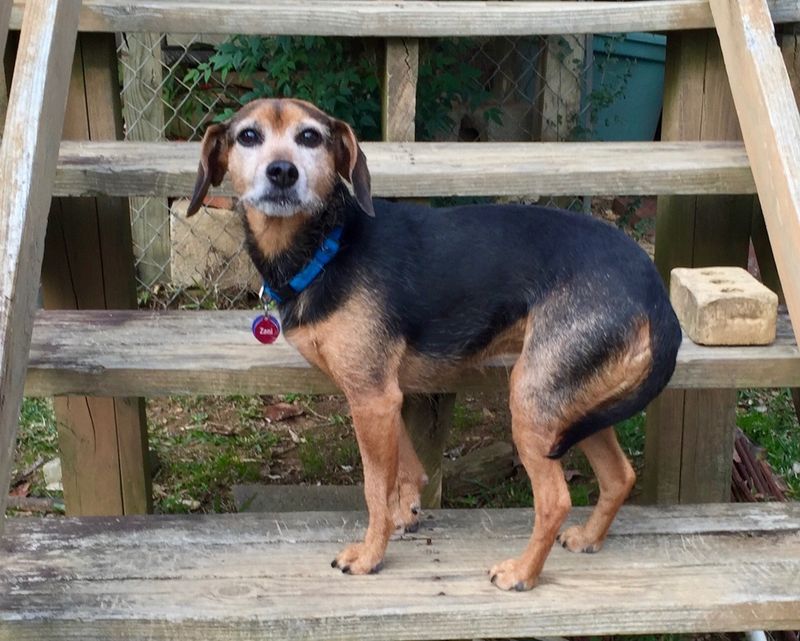
Your dog’s body tells stories their voice cannot. A tucked tail, flattened ears, or hunched posture screams discomfort and fear.
Approach with gentle movements and soft tones when you notice these signals. Never force interaction. Gradually reintroduce stressful situations with treats and praise, allowing your dog to build positive associations at their own pace.
9. Excessive Barking At Certain Stimuli

That frantic barking whenever the doorbell rings isn’t random. Specific triggers can set off alarm bells in your dog’s mind, causing targeted stress responses.
Try controlled exposure therapy. Start by playing doorbell sounds at low volume while giving treats. Gradually increase volume as your dog stays calm. This desensitization process takes patience but helps rewire their response to previously scary stimuli.
10. Aggression Towards People Or Other Animals
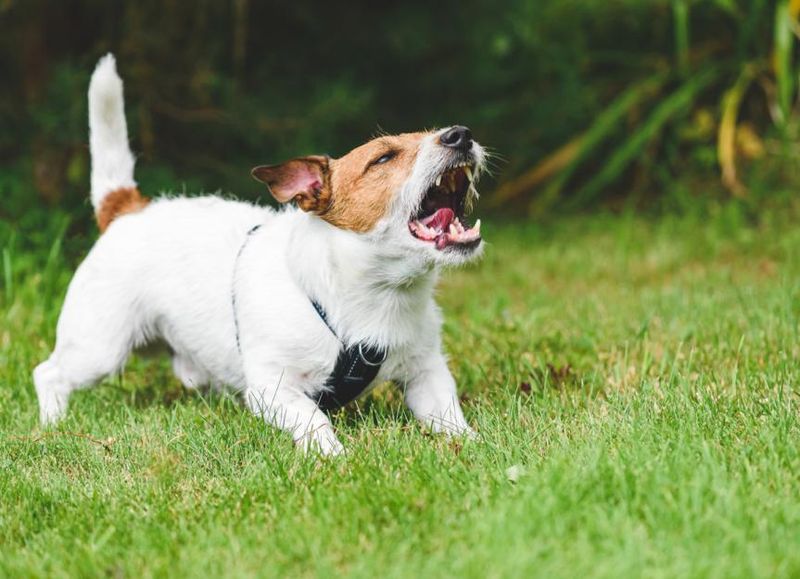
Sudden growling or snapping often masks fear, not meanness. Stressed dogs may lash out when they feel cornered or threatened.
First, identify what’s triggering the aggressive response. Create distance from these triggers while working with a professional trainer. Never punish aggression – it only increases fear. Instead, reward calm behavior around mild versions of whatever causes stress.
11. Pacing Or Restlessness
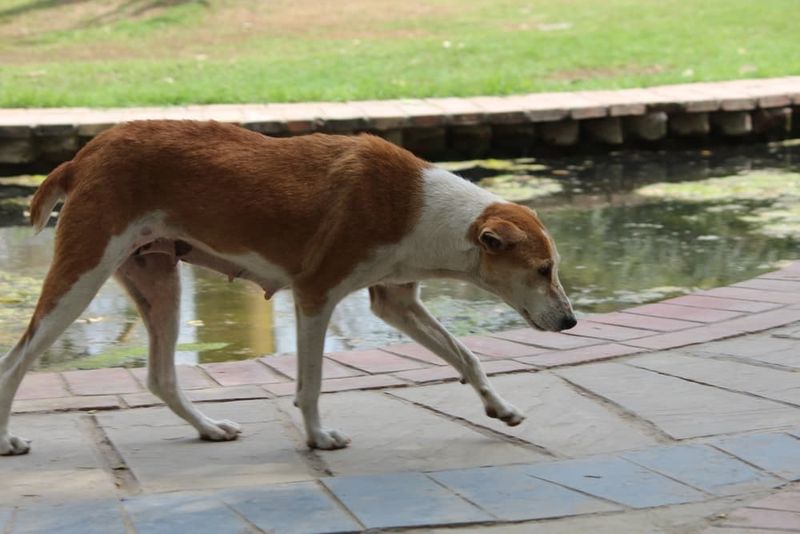
That non-stop circling or inability to settle isn’t just excess energy. Restless pacing often signals internal distress or anxiety that prevents your dog from relaxing.
Create a calming routine with predictable walks and quiet time. Gentle massage or a thunder shirt can help some dogs feel more secure. Background white noise or classical music has also been shown to reduce anxiety in many nervous pups.
12. Excessive Sleep Or Lethargy

When your normally bouncy buddy becomes a couch potato, take notice. Some dogs respond to stress by withdrawing and sleeping more than usual.
Gently encourage activity with favorite toys or short walks. Keep a log of behavior changes to share with your vet. Sometimes what looks like stress-induced lethargy could signal health issues requiring medical attention.
13. Sweaty Paws

Those mysterious wet paw prints aren’t spilled water. Dogs actually sweat through their paw pads when nervous – a little-known stress signal many owners miss.
Check for damp paw prints on hard floors during thunderstorms or fireworks. Provide a cozy hideaway during stressful events. Some dogs benefit from anxiety wraps that apply gentle pressure, similar to swaddling a baby.
14. Urinating Or Defecating Indoors

Finding unexpected puddles from your previously house-trained companion? Stress can override potty training, causing accidents even in well-trained dogs.
Never punish these incidents – it only increases anxiety. Reinforce regular bathroom breaks and reward outdoor successes. Consider whether a recent change (new pet, moved furniture) might be triggering this regression, and gradually help your dog adjust.
15. Tense Or Stiff Body

A relaxed dog is wiggly and loose. When stress hits, their body becomes rigid like a statue – muscles tighten and movement becomes stiff or robotic.
Gentle massage along the back and shoulders can help release tension. Speak in soothing tones and move slowly around them. Creating a predictable routine helps many dogs feel more secure, reducing physical manifestations of stress.
16. Overreacting To Normal Situations
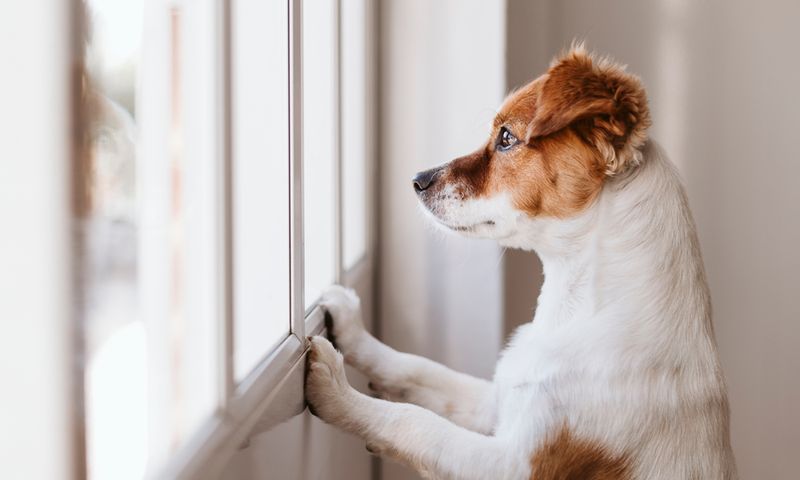
When your dog jumps at falling leaves or barks at parked cars, they’re showing hypersensitivity. This heightened reactivity often stems from underlying anxiety making everyday situations seem threatening.
Begin desensitization with distance from triggers. Reward calm behavior with high-value treats. Gradually decrease distance as your dog remains relaxed. This process builds confidence and teaches them these normal situations aren’t dangerous after all.
17. Hiding In Small Spaces
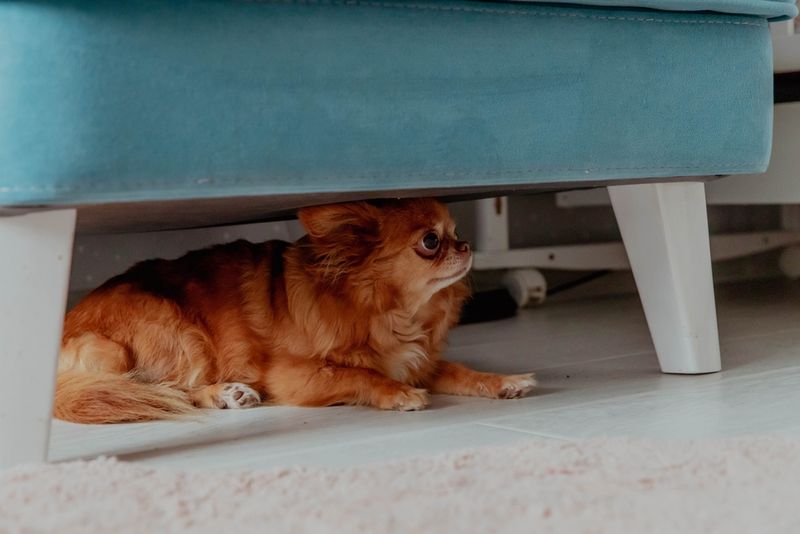
Finding your furry friend squeezed behind the toilet or under the bed? Small, enclosed spaces create a sense of security when dogs feel overwhelmed by their environment.
Create a dedicated safe zone with their bed and favorite toys. A covered crate with the door left open makes an ideal retreat. Respect these boundaries during stressful times – forcing them out only increases anxiety and breaks trust.






